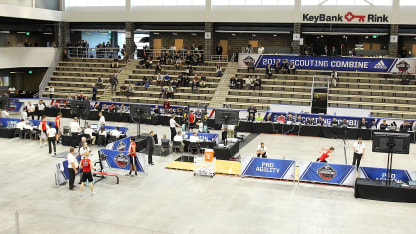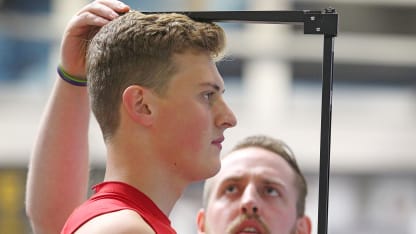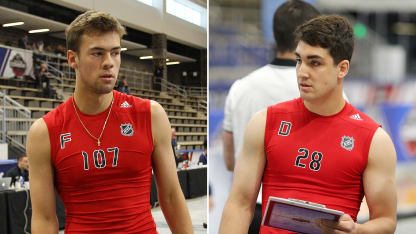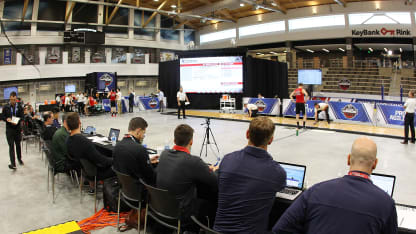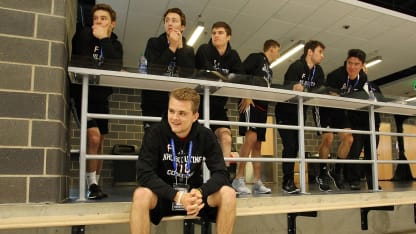That being said, the 45-year-old former French Olympian notes that prospects typically generate similar numbers across the board.
"When I started eight years ago, there was a huge difference between the top ones and the lowest ones. Now, everyone is kind of the same," mentioned Allard. "You get some guys who pop out a little bit more on certain tests, but the players all come to the combine in shape."
Certain characteristics are key
Admittedly, Allard is intrigued to see the results of some tests over others. A prospect's ability to generate power - and sustain it - is a primary area of interest.
"There are more and more power-related tests because hockey is a more explosive sport. For me, a hockey player is a sprinter on ice, and what separates a good player from an average player is his capacity to repeat high-intensity sprints," shared Allard. "Every team is looking for players that can be explosive and repeat it shift after shift, night after night."
Teams across the league are also looking for players with good mobility and agility, which, according to Allard, is a sign of good things to come.
"Hockey is more about speed now. It's being played faster and faster. The change in direction is very fast and so is the transition. A guy with good mobility can have a better range of motion," indicated Allard. "A better range of motion means you have a better capacity to develop your power and your skating. But it's all probability."
